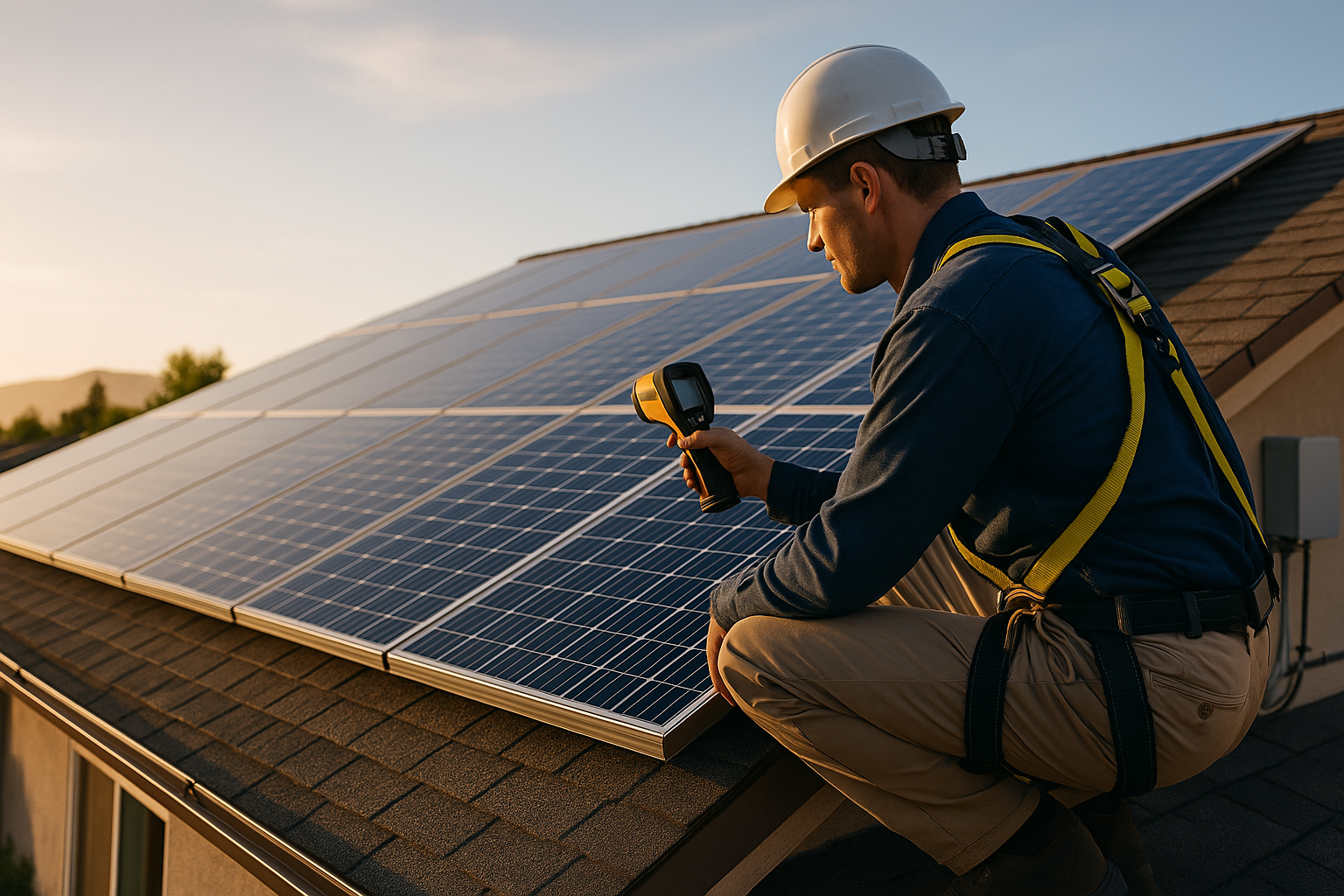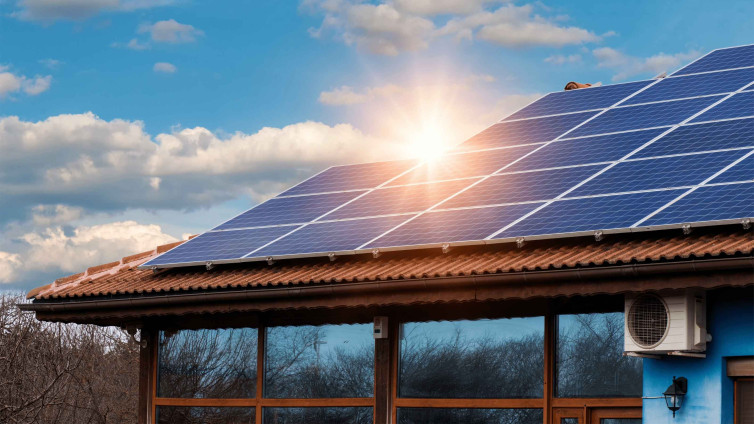Solar Panel Maintenance: Lifespan, Efficiency & Care
Well-maintained solar panels typically deliver 25–30 years of productive service. The essentials are simple: keep modules clean and unobstructed, inspect wiring and mounting annually, monitor output for drops, and service the inverter on schedule. A light, regular routine protects efficiency, prevents small faults from growing, and preserves your long-term ROI.
Table of Contents
-
Understanding Solar Panel Lifespan and Degradation
-
Maintenance Essentials: Cleaning, Inspections, and Monitoring
-
Seasonal and Environmental Considerations
-
Component Care Beyond the Panels
-
Cost, ROI, and Professional Service Schedule
Understanding Solar Panel Lifespan and Degradation
Why “maintenance” matters in a low-maintenance technology. Modern photovoltaic (PV) modules don’t have moving parts, which is why they last so long. But efficiency quietly declines when dust accumulates, shade creeps in, seals age, or electrical resistance increases at connections. A modest, proactive routine keeps energy yield high and extends component life.
Typical lifespan and warranties. Most quality panels carry a 10–12 year product warranty and a 25-year performance warranty that guarantees a percentage of original output after 25 years. In practice, many systems keep producing beyond that window with proper care. A small annual degradation rate is normal; minimizing preventable losses—soiling, shading, hot spots—has a larger impact than you might expect.
Where performance is won or lost.
-
Soiling and shading: Even a thin layer of grime or partial shade can reduce output. Bird droppings, pollen, and urban dust are common culprits.
-
Thermal stress and hotspots: Loose connectors or damaged cells create localized heating that accelerates aging.
-
Water ingress and UV: Weather seals and backsheets age over decades. Routine checks spot issues before they spread.
-
Balance-of-system (BoS): Inverters, wiring, and mounting hardware ultimately determine how reliably panel power reaches your meter.
A mindset shift: Think of solar panel maintenance as optimization rather than repair. You’re not “fixing what’s broken”; you’re preserving efficiency so the array continues to outperform the minimum warranty line.
Maintenance Essentials: Cleaning, Inspections, and Monitoring
Cleaning that actually improves output. In many regions with regular rain and a decent tilt, panels self-clean reasonably well, but not completely. If you can see grime from the ground, it’s already costing energy. Plan light cleaning when:
-
Accumulated dust or pollen is visible.
-
After a dry spell or local construction.
-
Following storms that leave debris.
How to clean safely and effectively. Use soft water, a non-abrasive brush or squeegee, and a mild detergent only if needed. Avoid harsh chemicals and abrasive pads that can micro-scratch glass. Work in cool, overcast hours to reduce thermal stress and streaking. On pitched roofs or where access is risky, prioritize safety and hire a professional—it’s rarely worth climbing without the right gear.
Visual inspections that catch silent faults. Once or twice per year, perform a methodical walk-around from safe vantage points:
-
Modules: Look for cracked glass, delamination, burn marks, or persistent shading from new foliage.
-
Wiring and junction boxes: Check for UV-brittled insulation, sagging cables, or rodent damage.
-
Mounting and flashings: Confirm tight hardware, intact sealant, no corrosion, and good roof integrity.
-
Inverter status lights and logs: Note error codes, unexpected shutdowns, or repeated grid-fault messages.
Performance monitoring as your early-warning system. Whether you use a dedicated monitoring portal or a simple production log, track daily or weekly output alongside weather. A sudden drop under similar irradiance conditions is a red flag. Monitoring helps isolate issues: a whole-array dip suggests soiling or shading; a single-string drop points to a localized fault like a connector or module problem.
When to clean vs. when to call a pro. If output rebounds after rain, grime was the likely cause; schedule routine cleanings during dry seasons. If cleaning doesn’t restore performance—or anomalies persist—book a professional inspection with electrical testing (I-V curve tracing, insulation resistance) to pinpoint faults invisible to the eye.
Seasonal and Environmental Considerations
Climate shapes your maintenance calendar. Your environment dictates what matters most: pollen surges in spring, dust in late summer, leaves in autumn, snow in winter, salt in coastal air, and soot near high-traffic corridors. Build your routine around these realities rather than a generic schedule.
Rain isn’t a cure-all. Light showers can redistribute dirt into stubborn films. After long dry periods, a deliberate rinse and squeegee often pays back within weeks through restored output.
Snow and cold weather. Snow usually slides off at adequate tilt, but flat or low-tilt arrays may need attention. If removal is necessary, use a soft foam roof rake designed for PV and avoid sharp tools that stress frames or scratch glass. In very cold climates, brief fogging and refreezing can seal dust beneath thin ice layers—wait for thawing conditions before cleaning.
Heat and drought. During hot, dry spells, soiling accelerates and module temperature rises, reducing voltage. While you can’t control ambient heat, you can reduce thermal stress by ensuring free airflow behind panels and avoiding cleaning with very cold water on hot glass.
Wildlife and vegetation management. Birds may nest under rooftop arrays, and squirrels can chew cable insulation. If this is common in your area, consider critter guards around perimeter rails. Trim trees that cast new shade as they grow; an annual arbor check is often enough to keepthe strings fully illuminated.
Urban and coastal settings. In cities, fine particulates and diesel soot settle quickly; schedule extra cleanings. Near coasts, salt spray can accelerate corrosion—inspect frames and fasteners for pitting, and rinse more frequently to remove saline residues.
Component Care Beyond the Panels
Inverters: The inverter is the workhorse translating DC to AC and is the component most likely to require service within a 10–15 year horizon. Keep vents clear of dust, maintain adequate shade and airflow, and review error logs quarterly. String inverters may need replacement once in a system’s life; microinverters or DC optimizers distribute conversion and can simplify troubleshooting of single-module issues.
Wiring and connectors: Outdoor electrical connections experience thermal cycling and UV exposure. Dielectric grease on certain connectors (as specified by the manufacturer), proper strain relief, and tidy cable management reduce resistance and prevent moisture ingress. If you notice discoloration or a “hot” smell at a combiner box, schedule a professional check immediately.
Mounting and roof interface: Fasteners should stay snug, rails level, and flashing intact. Even small leaks can degrade roof decking over time. After extreme weather—hail, hurricane-force winds, or seismic events—arrange a post-event inspection to confirm alignment and structural integrity.
Batteries (if present): Hybrid systems with storage add another layer of care. Keep battery cabinets clean and cool, follow manufacturer firmware updates, and check state-of-health reports. For lithium systems, thermal management is key; for legacy lead-acid, electrolyte levels and equalization cycles may be relevant.
Documentation and serials: Photograph nameplates, record serial numbers, firmware versions, and warranty details. This paperwork speeds service interactions and prevents unnecessary downtime if a component needs RMA processing.
Cost, ROI, and Professional Service Schedule
The business case for maintenance. A light, predictable program ensures you keep the capacity you paid for. Consider two arrays with identical hardware: the one cleaned and inspected on schedule will produce meaningfully more energy over 25 years, often repaying maintenance bills several times over—especially in dusty or pollen-heavy regions. Preventive electrical checks also reduce the risk of arc faults and downtime.
DIY vs. professional: choosing smartly. Many homeowners can handle visual checks and ground-level rinses. Roof work, electrical diagnostics, and any task that compromises safety or warranty should be professional. Where rebates or performance-based incentives exist, documented service can be a requirement—another reason to keep records.
A pragmatic schedule that fits most systems. Think in quarters, not weeks. Quarter-by-quarter, you’ll cover all tasks without turning solar into a chore. Production patterns and local climate will tell you whether to add or subtract touchpoints.
PV Maintenance Planner (Typical Ranges)
| Task | Purpose | Recommended Frequency | DIY or Pro | Typical Time | Typical Cost (USD) |
|---|---|---|---|---|---|
| Visual array check (modules, shading, debris) | Catch obvious issues early | 2× per year | DIY | 30–45 min | $0 |
| Rinse/clean panels (as needed) | Restore output lost to soiling | 1–3× per year (climate-dependent) | DIY or Pro | 1–2 hrs | $0–$250 |
| Electrical inspection (connections, insulation tests) | Prevent hotspots/arc faults | Every 1–2 years | Pro | 1–2 hrs | $150–$400 |
| Inverter log review & firmware | Detect faults, optimize operation | Quarterly review; update as issued | DIY/Pro | 15–60 min | $0–$150 |
| Vegetation trimming / critter guard check | Prevent shading and cable damage | Annually | Pro (often) | 1–3 hrs | $100–$400 |
| Comprehensive performance audit (I-V curve, irradiance) | Benchmark health & plan replacements | Every 3–5 years | Pro | Half day | $300–$800 |
Notes: Costs vary by region, roof complexity, and system size. If access is risky or roof pitches are steep, budget for professional cleaning rather than DIY.
Interpreting performance numbers like a pro. Use your monitoring app (or monthly utility net-metering statements) to compare year-over-year production for the same months. Adjust expectations for weather variability: a cloudier June can mask degradation. What you’re looking for is unexplained divergence—a steeper drop than historical variance. That’s your cue to inspect or book a diagnostic.
End-of-life and upgrades. If your system approaches inverter replacement age, consider whether adding optimizers, upgrading firmware, or integrating storage aligns with your goals. Panel technology evolves; selective augmentation (e.g., expanding with higher-efficiency modules on a new sub-array) can boost annual yield without removing functioning panels.
Risk management and safety, as well as electricity and heights, don’t forgive complacency. Use fall protection, de-energize per manufacturer guidance before opening enclosures, and never bypass safety interlocks. If in doubt, step back and schedule a qualified technician—avoiding accidents is the ultimate cost saver.


